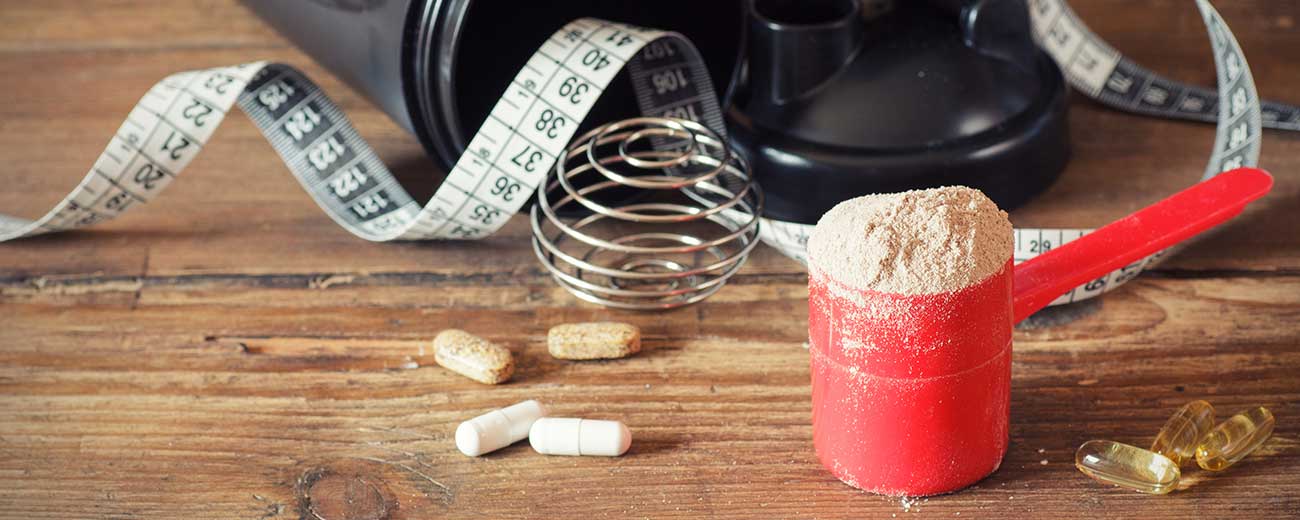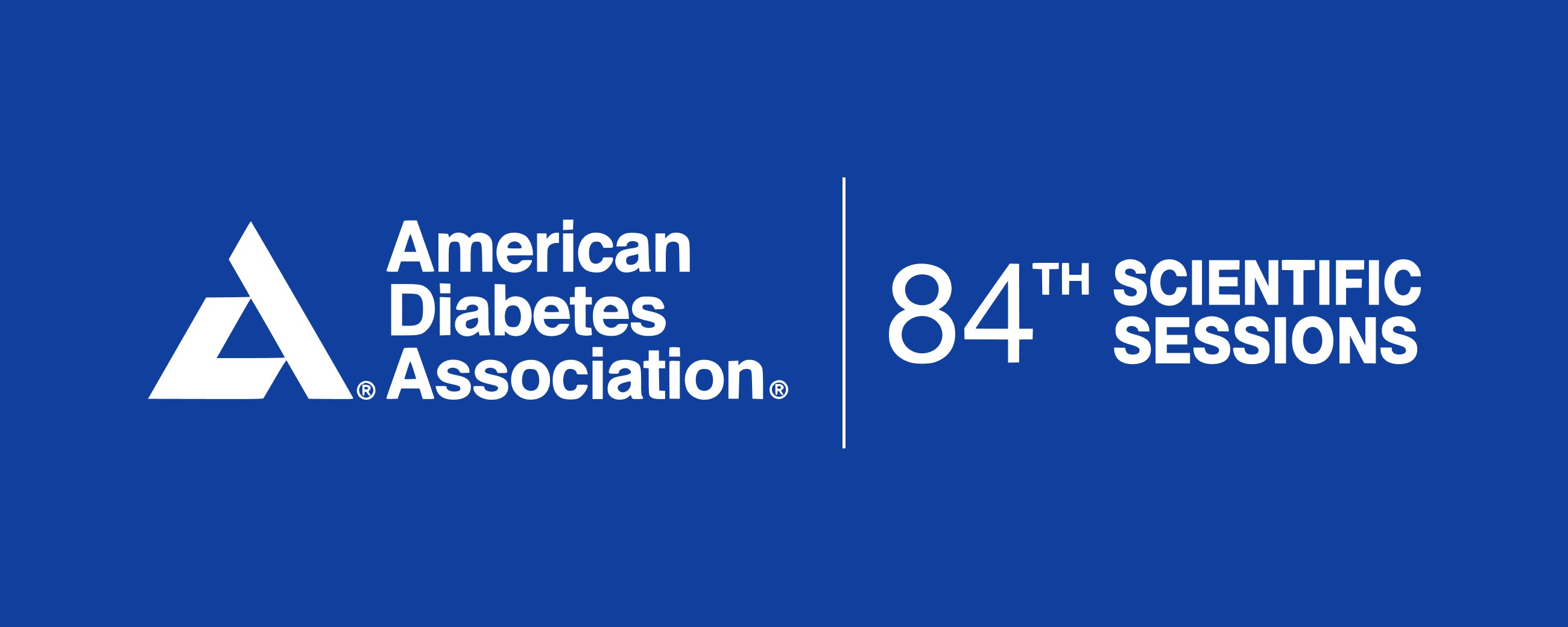
The Pros and Cons of Ketone Supplements

Shedding light on new methods of achieving ketosis
Helpful post to read in preparation: Keto-adaptation
When we say ketones, we are referring to the primary circulating fatty acid metabolites beta-hydroxybutyrate (βOHB) and acetoacetate (AcAc). More on ketone basics here.
Exogenous ketones (also known as ketone supplements) and well-formulated ketogenic diets share at least one thing in common. They both result in increased circulating concentrations of beta-hydroxybutyrate (BOHB), but ultimately are associated with very different patterns of ketosis, as well as differing metabolic and physiologic outcomes. In short, they should not be assumed to have equivalent effects simply because they achieve similar BOHB blood levels. Having said that, there are many reasons we should continue to study the various forms and potential applications of ketone supplements.
For the past few million years, the only way for humans to make use of ketones for fuel was to restrict carbohydrates low enough and long enough to induce the liver to make them. This is admittedly hard for many people to do in a world that still believes that dietary carbs are good and fats are bad. An emerging alternative is to consume ketones as a dietary supplement. The research into how these function in the body and what benefits they can confer remains early stage, but there are already a number of such products available for sale. In this section, we will discuss how exogenous ketones affect blood ketone levels, and how they may influence health and disease compared to ketones produced within the body.
The two predominant ketones made by the liver are beta-hydroxybutyrate (BOHB) and acetoacetate (AcAc). Here’s a brief summary of basic information regarding these ketones:
- It is estimated that a keto-adapted adult can make 150 or more grams of ketones daily after adapting to a total fast (Fery 1985), and perhaps 50-100 grams per day on a well-formulated ketogenic diet.
- Some AcAc naturally breaks down to form acetone, which comes out through the lungs and kidneys, giving a chemical odor to the breath when ketones are high.
- Much of the AcAc made in the liver is picked up by muscle and converted to BOHB.
- As part of the keto-adaptation process, how muscles and kidneys deal with BOHB and AcAc changes over the first few weeks and months, and thus the ratio of AcAc to BOHB in the blood changes considerably in the first week or two.
- While the ultimate fate of most ketones in the blood is to be burned for fuel, BOHB and AcAc appear to have differing roles in regulating genes and cellular functions.
- Particularly with gene regulation, BOHB seems to play a more significant regulatory role than AcAc, but AcAc may have a particular role in signaling muscle regeneration (Zou 2016).
Sources and Formulations of Exogenous Ketones
The two compounds commonly referred to as ‘ketone bodies’ (BOHB and AcAc) are produced and used for multiple purposes across nature from algae to mammals, but seldom in concentrations useful for extraction as human food. For this reason, the source of most exogenous ketones is chemical synthesis. Furthermore, most current research and use of ketone supplements focuses on BOHB. That is because AcAc is chemically unstable – it slowly breaks down to form acetone by releasing of one molecule of CO2.
In a keto-adapted individual where ketone metabolism is brisk with up to 100 grams or more being oxidized (i.e., ‘burned for energy’) daily, the small amount lost in breath and urine as acetone is minor. But because this breakdown occurs spontaneously without needing the help of enzymes, it also happens to AcAc in a stored beverage or food (even in an air-tight container), making the shelf-life of AcAc-containing products problematic. Thus all current ketone supplements consist of BOHB in some form rather than the naturally occurring mix of BOHB and AcAc produced by the liver.
Another important difference between endogenous and exogenous BOHB is that most synthetic BOHB used in dietary supplements is a mixture of the two ‘D’ and ‘L’ isomers, whereas endogenously produced BOHB consists of just the D-isomer. Metabolically, the two isomers are very different, and current published information indicates that most of the energy and signaling benefits of BOHB derive from the D-form. This is potentially problematic because the L-isomers are not metabolized via the same chemical pathways as the D-forms (Lincoln 1987, Stubbs 2017), and it remains unclear whether humans can convert the L-form to the D-form.
Thus, while the L-isomers do not appear to be toxic, they are not likely to impart the same benefits as the D-forms. In addition, the current assays for blood ketones are specific to the D-isomer, so it is difficult to track blood levels and clearance of any L-isomer taken in a supplement.
New Research on Poly-BOHB, An Ancient Energy Source
Another source of the D-BOHB isomer is an evolutionarily ancient energy source for micro-organisms. Poly-BOHB is a long chain of D-BOHB molecules strung end-to-end. It functions in many single-cell organisms as a concentrated energy source similar to glycogen in mammals, but whereas glycogen breakdown releases individual glucose molecules, poly-BOHB hydrolysis releases single D-BOHB molecules.
Interestingly, poly-BOHB has recently been reported to have important roles in mammalian mitochondrial membranes, cell membrane calcium channels, and in exotic functions like protein folding (Dedkova 2014). It exists in a variety of chain lengths, ranging from short to very long. It is not clear if humans can digest and use poly-BOHB consumed in the diet, but in animals, poly-BOHB appears to have probiotic and bowel protective functions. This is a rapidly evolving topic that we will be watching closely.
Ketone Salts and Esters
Barring this novel poly-BOHB form, there are two general formulations for dietary BOHB supplements – salts derived from the keto-acid or an ester formed between the keto-acid and an alcohol.
Ketone Salts
The salts typically utilize sodium, potassium, calcium, or magnesium as the cation. Because these cations vary in molecular weight and valence (1+ or 2+), the amount of mineral delivered per gram of BOHB varies from 10% for the magnesium salt to 27% for potassium. Given that recommended daily intakes of these various minerals range from a few hundred milligrams up to 5 grams, whereas the daily ketone intake goal to mimic nutritional ketosis blood levels would need to be on the order of 50 grams, achieving this goal with ketone salts would severely challenge human dietary mineral tolerance.
If given all as a single salt, 50 grams per day of BOHB would mandate daily intakes of 5.8 g Mg++, 9.6 g Ca++, 11.0 g Na+, or 18.8 g K+. Even if divided up carefully as a mixture of these various salts, it would be problematic getting past 30 grams per day of BOHB intake. And again, most of the currently marketed ketone salt formulations are made with a mix of the D- and L-isomers of BOHB, so the actual delivered dose of the more desirable D-isomer is considerably less. The other concern with the salt formulations is that, as the salts of weak acids, they have an alkalinizing metabolic effect that might have a modest but cumulative effect on blood pH and renal function.
Ketone Esters
The keto-esters are more appropriate for delivering higher doses of BOHB, but with repeated dosing can push the limits of taste and GI tolerance. There has been fairly extensive research on a compound 3-hydroxybutyl 3-hydroxybutyrate that is converted via hydrolysis and liver metabolism to yield 2 molecules of ketones, presumably mostly D-BOHB (Clarke 2012 and 2014). In a study involving lean athletes, an approximate 50 gram dose raised blood BOHB levels to 3 mM after 10 min and reached 6 mM by 20 min. Submaximal exercise resulted in increased ketone disposal from 2 to 3 hours and contributed significantly to whole body energy use during exercise (Cox 2016). This product has been shown to significantly reduce appetite after a single dose (Stubbs 2018) but its effect on body weight in humans over a longer period of time has not been studied, nor has its effect on blood glucose control been reported in humans with type 2 diabetes. However a single dose prior to a glucose tolerance test in healthy humans reduced blood glucose area-under-curve by 11% and non-esterified fatty acid area-under-curve by 44% (Myette-Cote 2018).
Comparison of ketone supplements (chemical ketosis) to nutritional ketosis
The stimulus for the increase in ketones in response to a well-formulated ketogenic diet is the restriction of dietary carbohydrate, which triggers many favorable adaptations. Although both induce a form of ketosis, the lack of carbohydrate restriction in the context of using ketone supplements induces a different metabolic profile.
The blood levels of BOHB that can be achieved with the salts or ester formulations are in the 1-3 mM range, similar to what can be achieved with a well-formulated ketogenic diet in insulin sensitive humans, but well below levels achieved after a 4-7 days of total fasting (Owen 1969). In more insulin resistant humans, the ester formulation may deliver higher blood levels than a sustainable diet (as opposed to short term fasting). For example, in the Virta IUH Study of over 200 patients with type 2 diabetes, blood ketone mean levels were 0.6 mM at 10 weeks and 0.4 mM after 1 year.
In terms of epigenetic signaling, initial studies of the effects of BOHB on class-1 histone deacetylase activity against oxidative stress (Schimazu 2013), NLRP3 inflammasome suppression (Youm 2015), mouse longevity (Roberts 2017), and other epigenetic regulatory effects suggest that levels as low as 1 mM have potent effects. Furthermore, the association between very mild ketonemia and reduced coronary mortality with SGLT2 inhibitor use in patients with type 2 diabetes (Ferranini 2016) suggests that there might be clinical benefits with chronic BOHB levels as low as 0.3 mM (Gormsen 2017. Vetter 2017).
The other potentially important distinction between nutritional ketosis and chemically-induced ketosis is the potential metabolic role played by liver AcAc production and redox status. Although the ratio of BOHB to AcAc in venous blood is typically 80% to 20%, classic studies by Cahill (1975) have observed important hepatic vein and peripheral arterio-venous gradients for this ratio in keto-adapted patients. What these observations imply is that the liver produces a higher proportion of AcAc than is found in the peripheral blood, and that this is due to uptake of AcAc in peripheral cells (principally muscle) with re-release as BOHB. In the process, the reduction of AcAc to BOHB produces NAD+, which is beneficial to mitochondrial redox state and mitochondrial function (Verdin 2015, Newman 2017).
That said, there also remains the question of the relative benefits of AcAc versus BOHB, both as independent signaling molecules and as redox modulators in peripheral (aka non-hepatic) tissues. Seen from this perspective, AcAc generated in the liver acts as a NAD+ donor for the periphery, whereas pure BOHB taken orally, to the extent that it is retro-converted to AcAc (Sherwin 1975), potentially deprives the periphery of NAD+.
Another factor to consider is that in nutritional ketosis the liver makes a steady supply of ketones and continuously releases them into the circulation. In contrast, most ketone supplement protocols involve bolus intakes that don’t mimic the endogenous release pattern. The extent to which this impacts metabolic and signaling responses across different tissues remains unclear.
Summarizing this section, clearly some of the benefits of nutritional ketosis can be attributed to circulating levels of BOHB, and some of these benefits can accrue at blood levels at or even below 0.5 mM. Thus, where we ‘set the bar’ for the minimum ketone level that confers benefit remains to be defined.
Practical Considerations in Prevention and Management of Chronic Disease
Until there is more definitive information on the necessary blood levels and the differing proportions of BOHB an AcAc to optimize cellular and organ functions, it will be difficult to specify the dosing and duration of supplemental ketones. However for fuel use, and very likely for exercise performance as well, sustained blood levels of BOHB in the range of 0.5 mM to 1.0 mM are likely to be required. This is achieved physiologically by an estimated ketone production of 50-100 grams per day in a keto-adapted human.
With the current ketone salt formulations, even 50 grams per day is likely above taste and physiologic mineral tolerances. So for these products, their potential benefits are likely limited to adding to existing blood ketone levels for someone already following a low carbohydrate diet.
For the ketone esters, on the other hand, repeated doses of 20-30 grams in any one day may be possible. Thus these products may be able to maintain a modest level of ketonemia without dietary carbohydrate restriction. Thus some of the cardiac and brain fueling benefits may follow, not to mention the epigenetic effects limiting oxidative stress and inflammation. But given the recent observation that administered ketone esters markedly reduce circulating free fatty acids (Myette-Cote 2018) -- possibly due to an insulin-tropic effect or direct suppression of lipolysis (Taggart 2005) -- their sustained use in people with underlying insulin resistance may compromise their long-term benefits by promoting weight gain unless combined with carbohydrate restriction.
The other impediments to the long-term use of ketone supplements is their poor palatability for the esters and their cost. Currently at about $1 per gram of delivered ketones, daily dosages from 25 to 100 grams quickly add up to exceed most reasonably anticipated benefits short of winning the Tour de France.
Sports Performance
There are enticing anecdotes of supplemental ketones being used to boost human physical performance in competitive events, notably among elite cyclists. Given that BOHB can deliver more energy per unit of oxygen consumed than either glucose or fatty acids (Sato 1995, Cox 2016, Murray 2016), this makes sense. But what we do not know is if there is any required period of adaptation to the use of exogenous ketones, and thus how to employ them in training. It is clear that exogenous ketones decrease adipose tissue lipolysis and availability of fatty acids, the exact opposite to what happens on a well formulated ketogenic diet. This distinction between exogenous ketones and ketogenic diets on adipose tissue physiology and human energy balance underscores an important reason why these two ketone-boosting strategies should not be conflated.
Cognitive function, Alzheimer’s and Cancer
Again, there are very interesting animal studies plus some single case reports and small uncontrolled trials of humans with neurodegenerative disease and cancer given ketogenic diets and/or exogenous ketones (Murray 2016, Poff 2015, Roberts 2017, Newport 2015, Cunnane 2016). In some cases where the patient does not have the cognitive resources to comply with a well-formulated ketogenic diet, or where target blood levels of BOHB that work in animals are hard to achieve in humans by diet alone, supplemental ketones may have an important role to play in the prevention, management, or reversal of these disease categories.
Summary
Ketone supplements rapidly and transiently increase blood concentrations of BOHB. On the surface, this seems like it should promote positive effects. There is a flurry of new studies being reported, some positive, some neutral, some negative. However, there are many questions yet to unravel.
The different forms (salts vs esters), what they are co-ingested with (carbohydrates vs no carbs, minerals), the background diet (ketogenic vs high-carb), and dosing, timing, and adaptation periods are just a few of the important factors that may determine the metabolic responses to ketone supplements.
The information we provide at virtahealth.com and blog.virtahealth.com is not medical advice, nor is it intended to replace a consultation with a medical professional. Please inform your physician of any changes you make to your diet or lifestyle and discuss these changes with them. If you have questions or concerns about any medical conditions you may have, please contact your physician.
This blog is intended for informational purposes only and is not meant to be a substitute for professional medical advice, diagnosis, or treatment. Always seek the advice of your physician or other qualified health provider with any questions you may have regarding a medical condition or any advice relating to your health. View full disclaimer
Are you living with type 2 diabetes, prediabetes, or unwanted weight?

- Clarke K, Tchabanenko K, Pawlosky R, Carter E, King MT, Musa-Veloso K, Ho M, Roberts A, Robertson J, Van Itallie TB, Veech RL. Kinetics, safety and tolerability of (R)-3-hydroxybutyl (R)-3-hydroxybutyrate in healthy adult subjects. Regul Toxicol Pharmacol. 2012; 63: 10.1016/j.yrtph.2012.04.008.
- Clarke K, Veech RL. US Patent 8,642,654, 2014 Cox PJ, et al. Nutritional Ketosis Alters Fuel Preference and Thereby Endurance Performance in Athletes. Cell Metabolism. 2016; 24:256-268.
- Cunnane SC, Courchesne-Loyer A, St-Pierre V, Vandenberghe C, Pierotti T, Fortier M, Croteau E, Castellano CA. Can ketones compensate for deteriorating brain glucose uptake during aging? Implications for the risk and treatment of Alzheimer's disease. Ann N Y Acad Sci. 2016; 1367:12-20. doi: 10.1111/nyas.12999.
- Dedkova EN, Blatter LA. Role of β-hydroxybutyrate, its polymer poly-β-hydroxybutyrate and inorganic polyphosphate in mammalian health and disease. Front Physiol. 2014; 5: 260. doi: 10.3389/fphys.2014.00260. PMCID: PMC4102118
- Ferrannini E, Mark M, Mayoux E. CV Protection in the EMPA-REG OUTCOME Trial: A “Thrifty Substrate” Hypothesis. Diabetes Care. 2016; 39:1108-1114. https://doi.org/10.2337/dc16-0330
- Féry F, Balasse EO. Ketone body production and disposal in diabetic ketosis. A comparison with fasting ketosis. Diabetes. 1985; 34:326-32.
- Gormsen LC, Svart M, Thomsen HH, et al. Ketone Body Infusion With 3‐Hydroxybutyrate Reduces Myocardial Glucose Uptake and Increases Blood Flow in Humans: A Positron Emission Tomography Study. Journal of the American Heart Association. 2017;6:e005066. https://doi.org/10.1161/JAHA.116.005066
- Lincoln BC, Des Rosiers C, Brunengraber H. Metabolism of S-3-hydroxybutyrate in the perfused rat liver. Arch Biochem Biophys. 1987; 259:149-56.
- Murray AJ, Knight NS, Cole MA, et al. Novel ketone diet enhances physical and cognitive performance. FASEB Journal. 2016; 30: https://doi.org/10.1096/fj.201600773R
- Myette-Côté E, Neudorf H, Rafiei H, Kieran Clarke K, Little JP. Prior Ingestion of Exogenous Ketone Monoester Attenuates the Glycemic Response to an Oral Glucose Tolerance Test in Healthy Young Individuals. Journal of Physiology. 2018; 'Accepted Article'; doi: 10.1113/JP275709.
- Newport MT,. VanItallie TB, Kashiwaya Y, King MT, Veech RL. A new way to produce hyperketonemia: Use of ketone ester in a case of Alzheimer's disease. Alzheimers & Dementia. 2015; 11: 99–103.
- Newman JC, Verdin E. β-Hydroxybutyrate: A Signaling Metabolite. Annual Review of Nutrition. 2017; 37:51-76. https://doi.org/10.1146/annurev-nutr-071816-064916
- Owen OE, Felig P, Morgan AP, Wahren J, Cahill GF Jr. Liver and Kidney Metabolism during Prolonged Starvation. J Clin Invest. 1969; 48:574-583.
- Poff AM, Ward N, Seyfried TN, Arnold P, D’Agostino DP. Non-Toxic Metabolic Management of Metastatic Cancer in VM Mice: Novel Combination of Ketogenic Diet, Ketone Supplementation, and Hyperbaric Oxygen Therapy. PLoS One. 2015; https://doi.org/10.1371/journal.pone.0127407
- Roberts MN, Wallace MA, Tomilov AA, Zhou Z, Marcotte GR, Tran D, Perez G, Gutierrez-Casado E, Koike S, Knotts TA, Imai DM, Griffey SM, Kim K, Hagopian K, Haj FG, Baar K, Cortopassi GA, Ramsey JJ, Lopez-Dominguez JA. A Ketogenic Diet Extends Longevity and Healthspan in Adult Mice. Cell Metab. 2017; 26:539-546.
- Sato K, Kashiwaya Y, Keon CA, Tsuchiya N, King MT, Radda GK, Chance B, Clarke K, Veech RL. Insulin, ketone bodies, and mitochondrial energy transduction. FASEB J. 1995; 9:651-8.
- Sherwin RS, Hendler RG, Felig P. Effect of ketone infusions on amino acid and nitrogen metabolism in man. J Clin Invest. 1975; 55:1382-1390. doi:10.1172/JCI108057
- Stubbs BJ, Cox PJ, Evans RD, Santer P, Miller JJ, Faull OK, Magor-Elliott S, Hiyama S, M Stirling M, Clarke K. On the Metabolism of Exogenous Ketones in Humans. Front. Physiol. 2017. | https://doi.org/10.3389/fphys.2017.00848 Stubbs BJ,
- Cox PJ, Evans RD, Cyranka M, Clarke K, de Wet H. A Ketone Ester Drink Lowers Human Ghrelin and Appetite. Obesity, 2018; 26:269–273. doi:10.1002/oby.22051
- Taggart AKP, Kero J, Gan X, Cai T-Q, Cheng K, Ippolito M, Ren N, Kaplan R, Wu K, Wu TJ, Jin L, Liaw C, Chen R, Richman J, Connolly D, Offermanns S, Wright SD, Waters MG. (D)-β-Hydroxybutyrate Inhibits Adipocyte Lipolysis via the Nicotinic Acid Receptor PUMA-G. J Biol Chem. 2005; 280:26649-26652. doi: 10.1074/jbc.C500213200 Verdin E. NAD+ in Aging, Metabolism, and Neurodegeneration. Science. 2015; 350:1208-1213.
- Vettor R, Inzucchi SE, Fioretto P. The cardiovascular benefits of empagliflozin: SGLT2-dependent and -independent effects. Diabetologia. 2017; 60:395–398
- Volek JS, Freidenreich DJ, Saenz C, Kunces LJ, Creighton BC, Bartley JM, Davitt PM, Munoz CX, Anderson JM, Maresh CM, Lee EC, Schuenke MD, Aerni G, Kraemer WJ, Phinney SD. Metabolic characteristics of keto-adapted ultra-endurance runners. Metabolism. 2016; 65:100-10.
- Zou X, Meng J, Li L, Han W, Li C, Zhong R, Miao X, Cai J, Zhang Y, Zhu D. Acetoacetate Accelerates Muscle Regeneration and Ameliorates Muscular Dystrophy in Mice. J Biol Chem. 2016; 291:2181-95.









